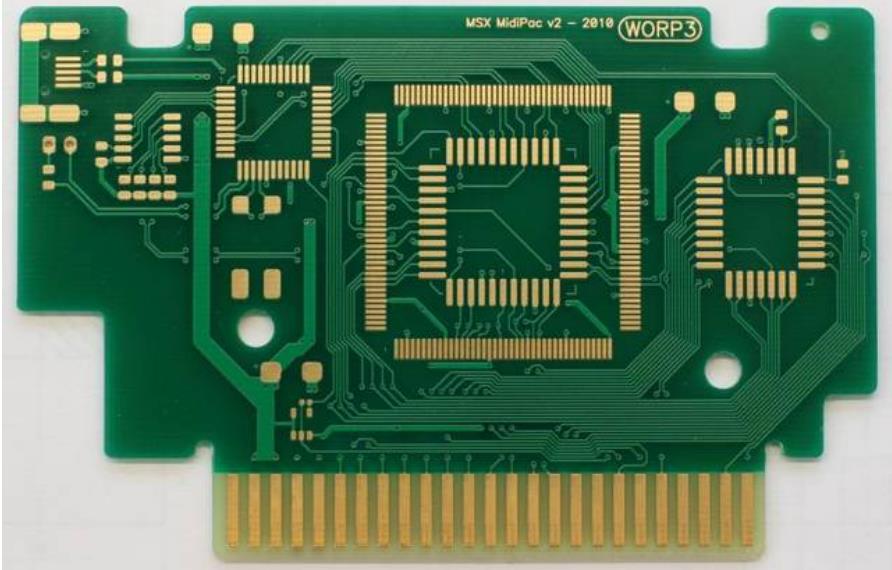Immersion gold board and gold-plated board are commonly used processes in circuit board production today. As the integration level of ICs becomes higher and higher, the number of IC pins becomes denser and denser. However, it is difficult to flatten the fine pads in the vertical HASL process, which brings difficulty to SMT placement; in addition, the shelf life of the HASL is very short. The gold-plated plate just solves these problems. For the surface mount process, especially for 0603 and 0402 ultra-small surface mount, because the flatness of the pad is directly related to the quality of the solder paste printing process, it has a decisive impact on the quality of the subsequent reflow soldering. It is often seen in high-density and ultra-small surface mount processes. In the trial production stage, affected by factors such as component procurement, it is often not to solder the board as soon as it arrives, but to wait for several weeks or even months before using it. The shelf life of the gold-plated board is longer than that of the tin board. Many times. So everyone is willing to adopt it. Besides, the cost of gold-plated PCB in the sample stage is almost the same as that of lead-tin alloy board.

1. What is gold plating: the whole board is gold plated. Generally refers to [electroplating gold] [electroplated nickel gold plate], [electrolytic gold], [electric gold], [electric nickel gold plate], there is a distinction between soft gold and hard gold (generally used as gold fingers). The principle is to dissolve nickel and gold (commonly known as gold salt) in chemical potion, immerse the circuit board in the electroplating tank and apply current to form a nickel-gold coating on the copper foil surface of the circuit board. The characteristics of high hardness, wear resistance and non-oxidation are widely used in electronic product names.
2. What is immersion gold: A layer of coating is formed by chemical oxidation-reduction reaction, which is generally thicker. It is a kind of chemical nickel-gold layer deposition method, which can achieve a thicker gold layer, which is usually called immersion gold.
The difference between immersion gold plate and gold plated plate
1. The crystal structure formed by immersion gold and gold plating is different. The thickness of immersion gold is much thicker than that of gold plating. Immersion gold will be golden yellow and yellower than gold plating, and customers are more satisfied.
2. The crystal structure formed by immersion gold and gold plating is different. Immersion gold is easier to weld than gold plating, and will not cause poor welding and cause customer complaints. The stress of the immersion gold plate is easier to control, and for products with bonding, it is more conducive to bonding processing. At the same time, because immersion gold is softer than gold plating, the immersion gold plate is not wear-resistant as a gold finger.
3. The immersion gold board only has nickel gold on the pad, and the signal transmission in the skin effect is on the copper layer and will not affect the signal.
4. The crystal structure of immersion gold is denser than that of gold plating, and it is not easy to produce oxidation.
5. As the wiring becomes denser, the line width and spacing have reached 3-4MIL. Gold plating is prone to short circuit of gold wire. The immersion gold board only has nickel gold on the pad, so it will not cause a short circuit of the gold wire.
6. The immersion gold board only has nickel gold on the pad, so the combination of the solder mask on the circuit and the copper layer is stronger. The project will not affect the spacing when making compensation.
7. It is generally used for boards with relatively high requirements, and the flatness is better. Generally, immersion gold is used, and immersion gold generally does not appear black pads after assembly. The flatness and standby life of the immersion gold board are as good as those of the gold-plated board
 Shenzhen HongYuan Electronics Co.,Ltd
Shenzhen HongYuan Electronics Co.,Ltd